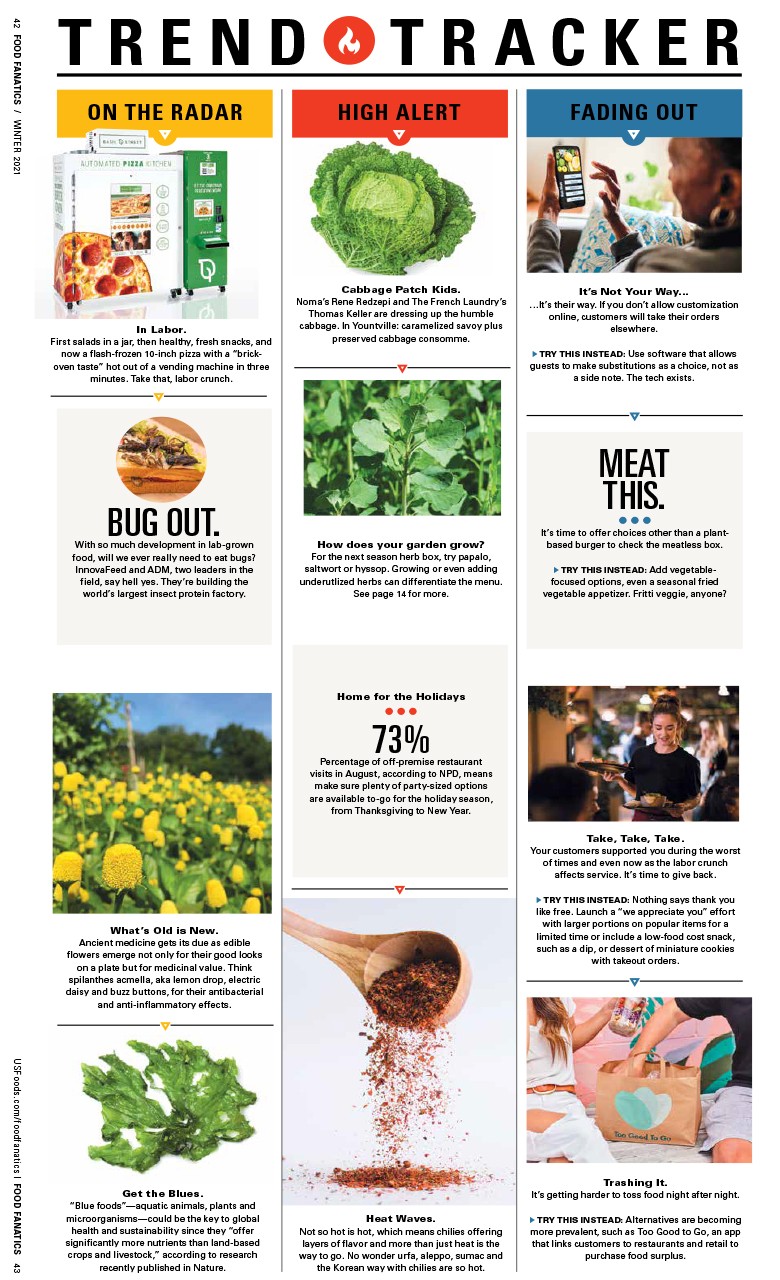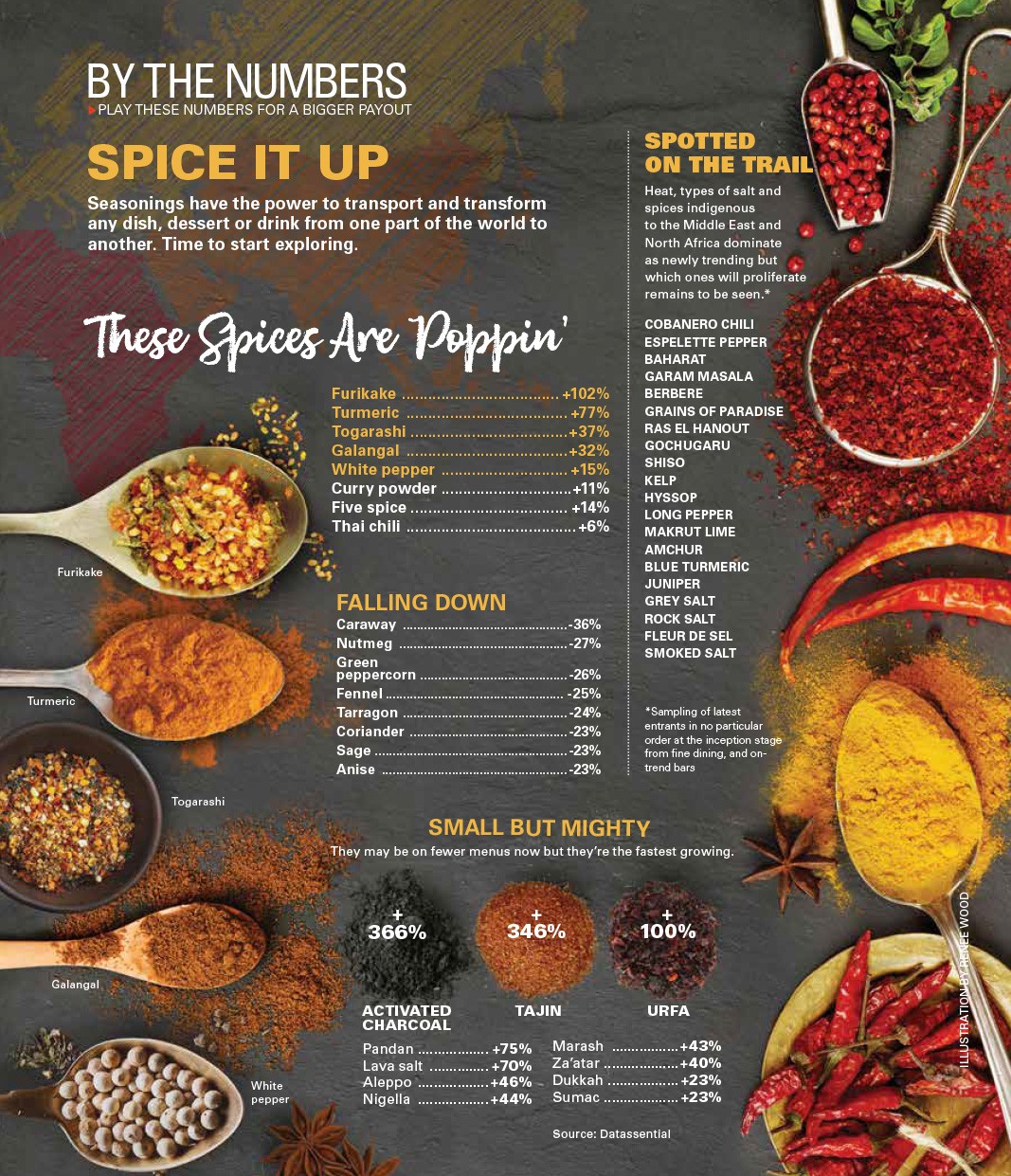Less is More
When it comes to food waste, it pays to be scrappy
Most kitchens know how to reduce food waste: adjust inventory to sales, use all parts of an ingredient, adopt a nose-to-tail approach, or purchase precut proteins and produce when prices are less than labor.
Specifics, however, aren’t always obvious. Start or add to this go-to list from chefs who make reducing waste a priority.
1. Use vegetable scraps for stock.
2. Toast and salt seeds from winter squash for garnishing.
3. Scrape fish bones to make fish cakes or chowder.
4. Turn the bones into fish stock.
5. Record all ingredients that are thrown out to shed light on food waste and which recipes need batch-size reductions.
6. Grind bacon ends or other trimmed proteins and fat to make sausage.
7. Render fat from trimmed proteins and use for sautéing and flavoring.
8. Reduce country ham bones and fatty trim to enrich soups, such as ramen.
9. Use excess fat from ‘nduja to fortify and flavor collards and other greens.
10. Use prep from breakfast and lunch, such as kale stems, for a vinaigrette.
11. Add minced garlic, shallots or onions left over from a shift to make stocks, brines and fermenting vinegars.
12. Combine chopped citrus ends, leftover pulp and citrus shells from daily juicing along with sugar, citric acid and juice from fruit past its prime to make a cordial for cocktails.
13. Add leftover charcuterie scraps to an XO sauce.
14. Add dried fruit pulp to a housemade hot sauce.
15. Save stems from plucked cilantro for pico de gallo instead of using a new bunch.
16. Use tomato trim from sandwiches for sauces, stocks or gazpacho.
17. Save seeds and pulp from tomatoes in a coffee-filter liner to make tomato water for cocktails, dressing and consommé.
18. Dehydrate tomato peels or citrus peels for a garnish or grind into a seasoning powder.
19. Amplify the flavor of pumpkin dishes with a stock made with dehydrated pumpkin skin, white wine, white vinegar, orange peel, pink peppercorns and a bay leaf.
20. Use pulp from fruit or juice typically discarded vegetable parts for cocktails.
21. Make vinegar with leftover products, including leftover wine.
22. Dehydrate fennel fronds to dust on dishes and cocktails.
23. Juice fennel stalks for a fennel and citrus cocktail.
24. Give balsamic vinegar more character by adding cherry pits. Ferment at room temperature for 48 hours; refrigerate. Avoid cracked pits (which contain cyanide).
25. Experiment with other pits, such as olives, apricots and cling peaches, to make different vinegars.
26. Use prosciutto scraps to make a prosciutto-scotch vinegar.
27. Throw Parmesan rinds into stocks or risotto. Include it to make an umami-infused vinegar.
SOURCES:
1 to 4, 6 to 11 from Evan Hanczor of Brooklyn’s Egg in New York; 5, 16, 17 from Joel Panozzo of The Lunch Room in Ann Arbor, Michigan; 12 to 15 from Jaime Young of Sunday in Brooklyn, New York; 18 to 19 from Maria Grubb of San Juan, Puerto Rico’s Gallo Negro; 20 from Chef Garbriel Hernandez of At Verde Mesa, also in San Juan; 21 to 22 from Matt Aita of Little Beet Table in New York and Connecticut; 25 to 26 from Chef Joseph Voller of il Nido in Marlboro, New Jersey



